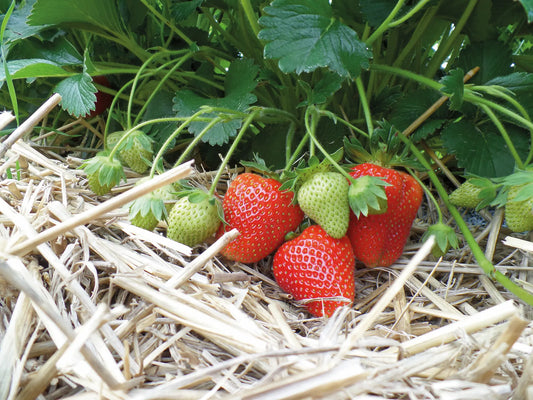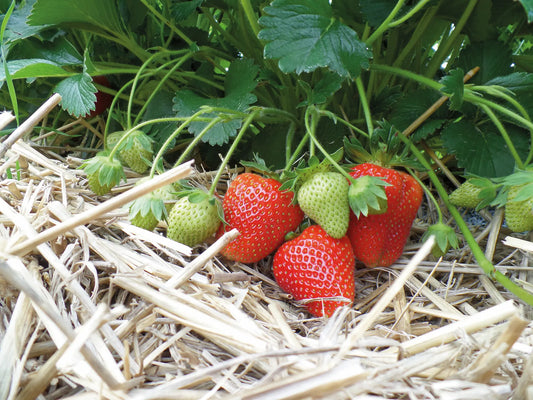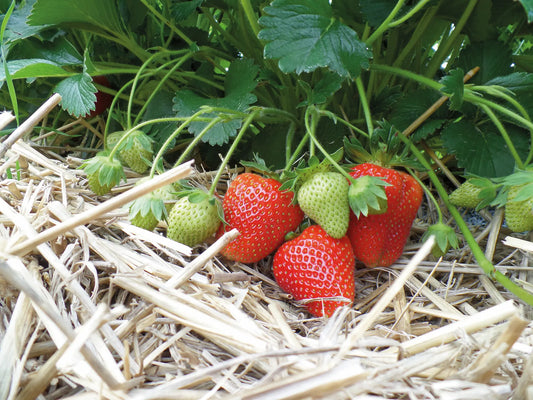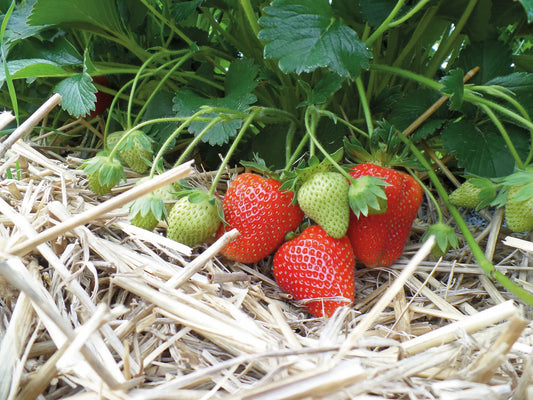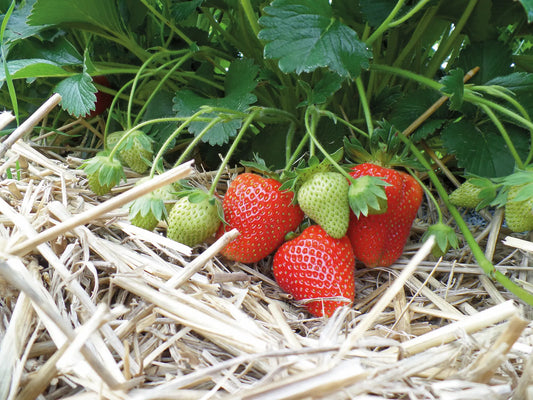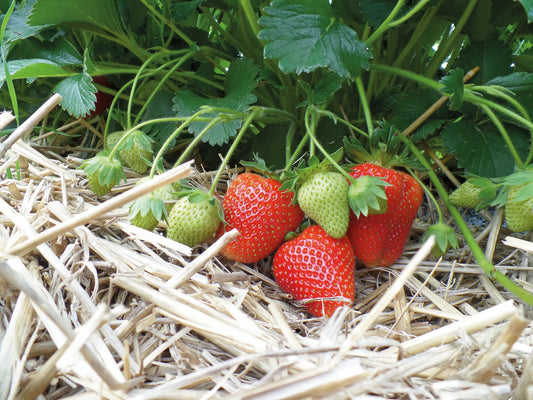-
Delivery from 10 plants to France, Switzerland and Europe
Delivery method -
Strawberry Plant Wholesale Supplier
About Us -
Quality Strawberry Plants
Strawberry technical itinerary -
Secure payment
Our Payment Terms
Magnus Frigo A Strawberry Plant
Magnus Frigo A Strawberry Plant
Price per unit (€ excluding VAT) excluding shipping. Our prices are based on volume. We offer you the best option based on your needs.
 - Add the desired date to your quote request
- Add the desired date to your quote request
- Buy now and get it delivered when you're ready to plant
- Delivery from 10 plants to France, Switzerland and Europe
Couldn't load pickup availability
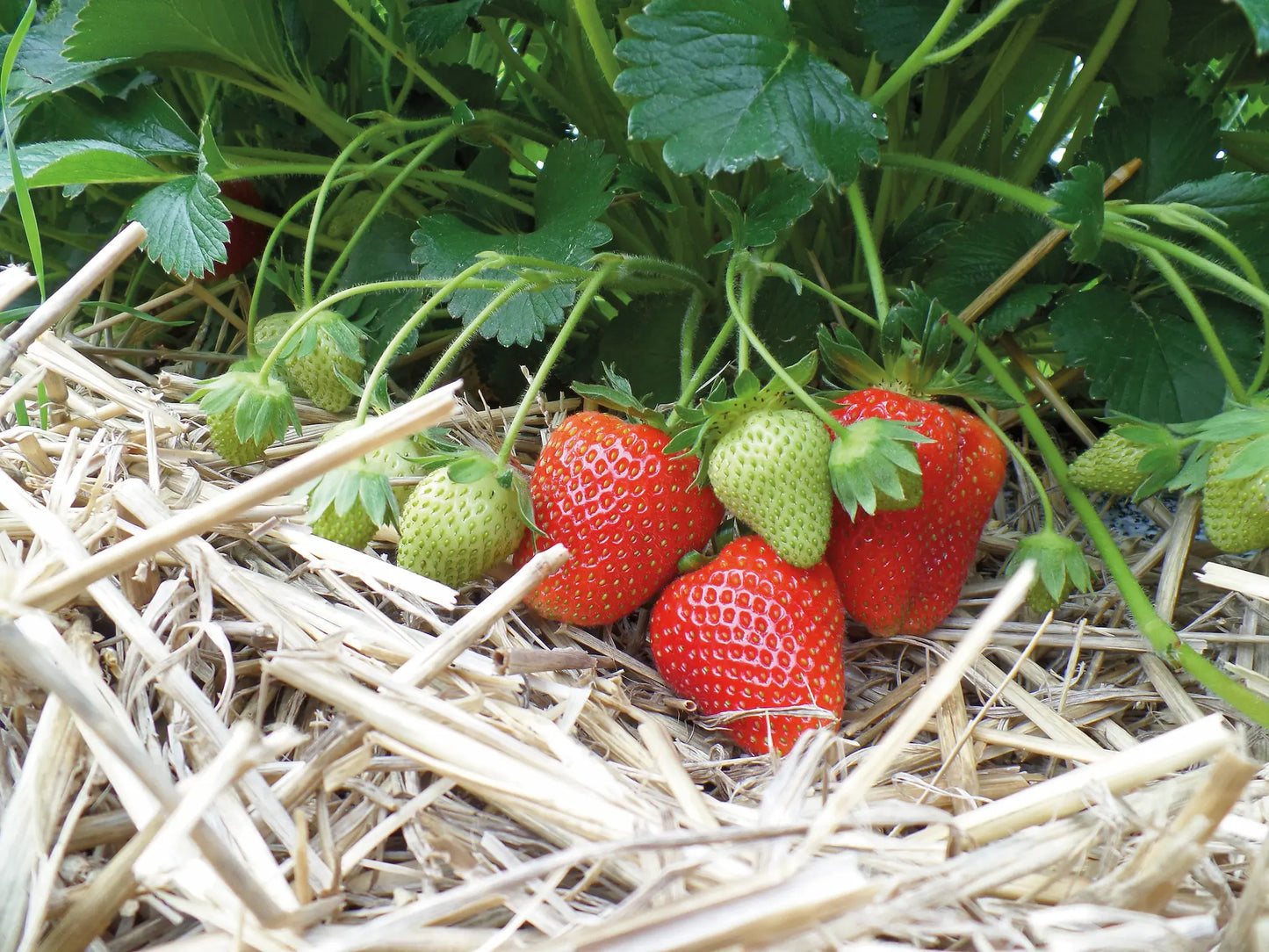
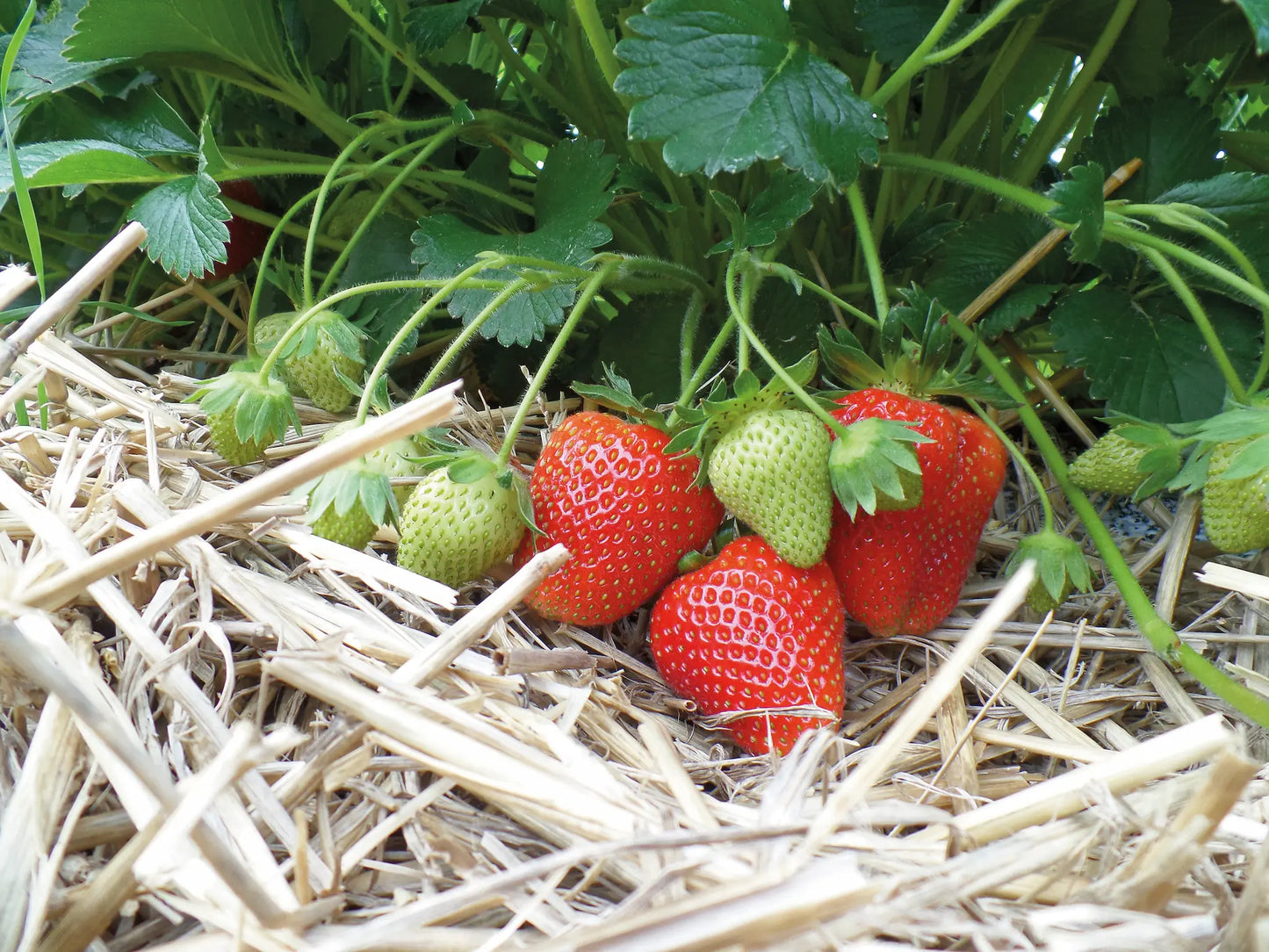
Collapsible content
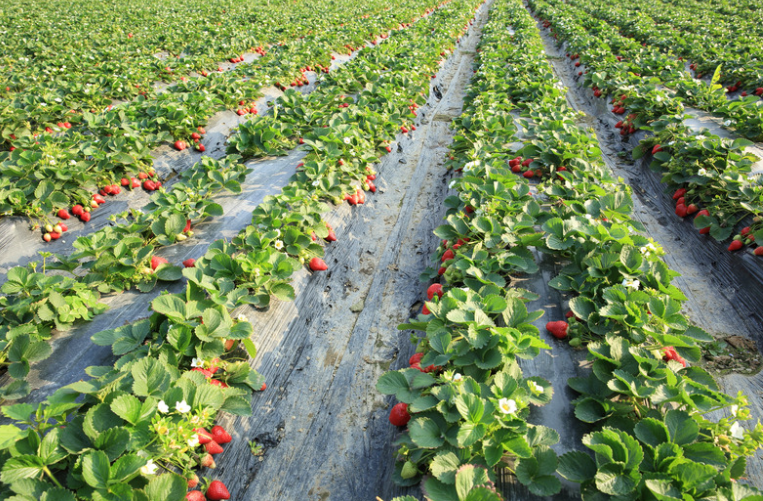
Strawberry Plant Buying Guide: What Type of Plants? For What Market Opportunity?
Which format should you choose: refrigerated, fresh, tray-plants, waiting bed, or plugs? Compare yields, costs, and harvest times at a glance.
Download the PDF guide (13 pages)
Why read this guide?
- Comparison tables: yield (300–600 g/plant), cost & labor.
- Reservation/delivery calendar for each format.
- Minimum order: 20 to 1,000 plants depending on the type.
- Full-field vs. above-ground case studies to maximize margin.
Overview of the 5 professional formats
Detailed comparison of formats
| Format | Yield (g/plant) |
Harvest time | Min. order | Average cost |
|---|---|---|---|---|
| Fridge | 250 – 400 | 120 days | 20 plants | 0.20 – 0.45 € |
| Costs | 280 – 420 | 140 days | 200 plants | 0.20 – 0.45 € |
| Tray plant | 400 – 600 | 90 days | 500 plants | 0.75 – 0.80 € |
| Waiting Bed | 300 – 500 | 105 days | 500 plants | 0.50 – 0.60 € |
| Motte | 230 – 350 | N+1 | 1,000 plants | 0.35 – 0.50 € |
Delivery schedule
| Plant type | Jan | Feb | Mar | Apr | May | Jul | Jul | Aug | Sep | Oct | Nov | Dec |
|---|---|---|---|---|---|---|---|---|---|---|---|---|
| Fridge | ||||||||||||
| Tray plants | ||||||||||||
| Waiting Bed | ||||||||||||
| Motte | ||||||||||||
| Costs |
Which format for which scenario?
Full field controlled budget
Fridge or Fresh : cost 2 x lower than tray plants, planting flexibility.
Above ground in greenhouse
Tray-plants : harvest 90 days after planting, uniform size, reduced labor.
Late planting
Mottes : planting July–August, rapid recovery, harvest the following year.
Ready to plan your plantings?
Download the complete guide Request a quoteFrequently Asked Questions
Is the guide free?
Yes, no fees or obligation to purchase.
How to download it?
Click the button “Download the guide” ; the PDF opens immediately.
Can I request a personalized quote?
Of course: write to us at contact@fraisiverse.com and an agronomist will respond to you within 24 hours.
Choosing the right strawberry varieties for your plot
Extend your harvest season by up to 5.5 months with our "early + season + everbearing" method. Compare 78 cultivars, sizes, and markets.
Download the PDF guide (17 pages)
4 axes to decide quickly
- Harvest Window : Early, Seasonal, or Everbearing? Combine them for 5.5 months .
- Commercial outlet : direct sales, long circuit, processing or freezing.
- Type of plants : fridge, fresh, root ball, tray plants… adapt your investments and your schedule.
- Growing conditions : open field, soilless, greenhouse; target consistent yield and size.
Axis 1: Select your harvest window
Example of recommended mix:
- Ciflorette (early) → Rubis des Jardins (season) → Charlotte (remontant).
- 5.5 months of continuous production, ideal for direct sales.
Axis 2: Sell at the right market
Direct sales
Ciflorette, Charlotte, Mara des Bois: premium taste sought after by consumers.
Long circuit / GMS
Magnum, Clery, Dream: uniform size, 95% class 1 fruit.
Transformation
Darselect, Mara des Bois – high sugar content and stable aroma.
Freezing
Honeoye, Belrubi – firm flesh, keeps well in the cold.
Axis 3: Choose the right type of plants
| Kind | Reservation | Delivery | Highlights |
|---|---|---|---|
| Fridge | All year round | Dec. → Aug. | Flexibility & price |
| Tray plants | Feb. → June | Nov. → Apr. | Above ground, harvest 90 days after planting |
| Motte | Sep. → May | Jul. → Sep. | Ideal for open fields, harvest N+1 |
| Costs | Feb. → Aug. | Sep. → Nov. | Young plants, rapid recovery |
Axis 4: Optimize your technical constraints
Tray plants guarantee +25% yield and simplified harvesting above ground; ideal for mechanizing your production and ensuring consistent size.
Frequently Asked Questions
Is the guide really free?
Yes, with no cost or obligation to purchase.
How to download it?
Just click the button “Download the guide” at the top of the page; the PDF opens immediately.
Can I request a personalized quote?
Of course: contact us via our contact page .
When to plant? When to harvest?
Do you want to start a strawberry farm but don't know when to reserve your plants, when to plant them or even harvest them?
Because we love 🍓 (with just a little sugar), we're going to do the work for you. On this page, you'll find the growing steps for each type of strawberry plant. When to order? What is the delivery period? When to plant? And finally, when to harvest?
Production Calendar - Frigo Strawberry Plants
| Production Calendar - Frigo Strawberry Plants | ||||||||||||||||||||||||
|---|---|---|---|---|---|---|---|---|---|---|---|---|---|---|---|---|---|---|---|---|---|---|---|---|
| Jan | Feb | Mar | Apr | May | Jun | Jul | Aug | Sep | Oct | Nov | Dec | |||||||||||||
| Reservation | ||||||||||||||||||||||||
| Deliverable | ||||||||||||||||||||||||
| Recommended planting | ||||||||||||||||||||||||
| Harvest | ||||||||||||||||||||||||
Production Calendar - Fresh Bare-Root Strawberry Plants
| Production Calendar - Bare Root Strawberry Plants | ||||||||||||||||||||||||
|---|---|---|---|---|---|---|---|---|---|---|---|---|---|---|---|---|---|---|---|---|---|---|---|---|
| Jan | Feb | Mar | Apr | May | Jun | Jul | Aug | Sep | Oct | Nov | Dec | |||||||||||||
| Reservation | ||||||||||||||||||||||||
| Deliverable | ||||||||||||||||||||||||
| Recommended planting | ||||||||||||||||||||||||
| Harvest | ||||||||||||||||||||||||
Production Calendar - Strawberry Plants Plugs
| Production Calendar - Strawberry Plants Motte | ||||||||||||||||||||||||
|---|---|---|---|---|---|---|---|---|---|---|---|---|---|---|---|---|---|---|---|---|---|---|---|---|
| Jan | Feb | Mar | Apr | May | Jun | Jul | Aug | Sep | Oct | Nov | Dec | |||||||||||||
| Reservation | ||||||||||||||||||||||||
| Deliverable | ||||||||||||||||||||||||
| Recommended planting | ||||||||||||||||||||||||
| Harvest | ||||||||||||||||||||||||
Production Calendar - Strawberry Plant Tray
| Production Calendar - Strawberry Plants Motte | ||||||||||||||||||||||||
|---|---|---|---|---|---|---|---|---|---|---|---|---|---|---|---|---|---|---|---|---|---|---|---|---|
| Jan | Feb | Mar | Apr | May | Jun | Jul | Aug | Sep | Oct | Nov | Dec | |||||||||||||
| Reservation | ||||||||||||||||||||||||
| Deliverable | ||||||||||||||||||||||||
| Recommended planting | ||||||||||||||||||||||||
| Harvest | ||||||||||||||||||||||||
Our Growing Guides by Plant Type / Our Growing Tips
Our online advisor: Fraisibot
Our technical itineraries by type of strawberry plant:
Technical Itinerary for Growing Strawberries from Frigo Plants
Technical Itinerary for Growing Strawberries from Plug/Pod Plants
Technical Instructions for Growing Strawberries from Tray or Mini Tray Plants
Technical Guide for Growing Strawberries from Bare-Root Fresh Strawberry Plants
Technical Instructions for Growing Strawberries from Waiting Bed Plants
All our growing tips for planting strawberries:
Strawberry Plants: Soil Preparation and Planting
Soil preparation for strawberry growing, planting techniques, and optimizing strawberry yield.
Best Practices for Irrigation and Fertilization of Strawberry Plants
Efficient irrigation systems, frequency and quantity of watering, types of fertilizers and application times, signs of nutritional deficiencies, growing strawberries in substrate, protection against frost and diseases.
Protection and Prevention of Strawberry Diseases and Pests
The main diseases and pests affecting strawberries, as well as effective methods for their prevention and treatment, including biological control and the use of resistant varieties. It provides practical advice for maintaining healthy and productive strawberry crops.
Succeeding in Strawberry Farming: Costs, Business Strategy and Subsidies
Growing strawberries requires significant initial and ongoing costs, but with effective marketing strategies and sustainable practices, growers can maximize their profits while contributing positively to the environment. Grants and financial aid are available to support necessary investments and encourage environmentally friendly farming practices.
Maximizing Strawberry Harvest and Storage: A Practical Guide
How to determine the optimal time to harvest strawberries, best practices for minimizing fruit damage during picking, and effective methods for storing and managing unsold strawberries to avoid losses and maximize profitability. It offers practical tips for extending the shelf life of strawberries, including refrigeration, freezing, and dehydration.
Strawberry Growing: Why Stagger Production? Early, Seasonal, Late? How to Choose?
Staggering strawberry production allows for harvests to be spread throughout the season, ensuring optimal fruit quality and increased profitability. Learn about recommended varieties for early, mid-season, and late-season production, as well as best practices for harvesting and storage.
Magnus strawberry variety technical sheet
- Remontant: Non-Remontant
- Precocity: Late
- Harvest period: End of June to end of July
- Shape, texture, appearance of the Fruit: Conical and uniform
- Fruit color: Bright red
- Taste characteristics: Good taste quality, firm fruit
- Fruit Size: Good taste quality, firm fruit
- Disease resistance: Good resistance to root and leaf diseases. Beware of thrips and weevils.
- Yield, management and marketing: High percentage of Class 1. High yield. Increase inter-plant distance to have high yield because of significant horizontal growth.
- Commercial use / Recommended marketing channel: Wholesale
- Our advice: Allows you to extend your harvest, ideal for wholesale sales
Order your professional strawberry plants
Fraisiverse, a specialist wholesale supplier of strawberry plants , offers you the Magnus variety, renowned for its high yields, firmness, and very sweet taste. Ideal for fresh consumption, this late variety offers an impressive size and excellent post-harvest storage. Buying your strawberry plants allows you to benefit from a product from specialized nurseries, carefully cultivated to guarantee professional quality. Our plants are delivered quickly and carefully throughout France, with dedicated technical support and personalized advice to optimize your production. Also take advantage of our producer prices and our decreasing prices for volume orders. The varietal resistance of Magnus and its tolerance to diseases reduce your growing risks. Order now or reserve your plants now to secure your supplies and maximize your performance in peak season. Request a free quote to anticipate your needs and guarantee your volumes.
Agronomic Characterization and Varietal Properties
The Magnus Strawberry stands out as a high-quality, non-remontant variety , offering a unique and concentrated production over a specific period of the season. Classified as a late variety , it allows you to extend your marketing period by arriving on the market after many early and mid-season varieties.
Morphology and Vegetative Development
In terms of the plant itself, the Magnus is characterized by significant vigor , developing imposing bushes, 25 to 35 centimeters in height and reaching up to 50 centimeters in diameter , with dense foliage and a solid root system. This robustness is a significant agronomic asset.
Organoleptic Qualities and Commercial Characteristics
Magnus fruits are unanimously appreciated for their aesthetics and organoleptic qualities. They are very large, generally weighing between 22 and 26 grams per fruit , with a conical shape and remarkable uniformity. Their external color is an intense bright red , very attractive to the end consumer, while the internal flesh is light red to pinkish, homogeneous, without a marked white heart, and offering a firm and juicy texture . In the mouth, the fruit provides a pleasant and crunchy sensation, with a very sweet taste and low acidity . This firmness also gives it low sensitivity to shocks and crushing , guaranteeing excellent post-harvest stability.
Technical Production Route
Planting Parameters and Optimal Density
To fully exploit the potential of the Fraisier Magnus, a rigorous cultural itinerary is recommended. In terms of spacing, a professional planting density is generally between 40,000 and 45,000 plants per hectare . This corresponds to a spacing in the row of 25 to 30 centimeters between plants , and 60 to 70 centimeters between rows . These distances promote good aeration, reducing the risk of disease and optimizing fruit development.
Nutritional Management and Fertilization
Regarding fertilization, although specific data for Magnus are not detailed, an indicative plan for large-sized, non-remontant strawberries, similar to that of varieties such as Rendezvous, can be applied. For open-field cultivation on soil of average fertility, annual applications are recommended: 80 to 120 units of nitrogen (N), 80 to 100 units of phosphorus (P₂O₅), and 120 to 180 units of potash (K₂O) per hectare . It is crucial to split the nitrogen applications: approximately half before the vegetative restart in spring, then the remainder in two applications at the flower bud stage and at the beginning of fruit enlargement. Phosphorus and potash applications are generally made in one application during soil preparation, as these elements are less mobile. The integration of 25 to 30 tonnes per hectare of mature compost or well-rotted manure before planting is also essential to improve soil structure and promote its biological activity.
Trace Element Management and Irrigation
Monitoring trace elements is essential; calcium is essential for fruit firmness and preservation , while magnesium supports photosynthesis and foliage vigor. Deficiencies in boron, iron and zinc can affect flowering and fruit set, especially on basic soils or those rich in organic matter. Always adapt these recommendations to a prior soil analysis for precise inputs. Vigilance is also required regarding irrigation, which must be regular, particularly during flowering and fruit growth , to maximize the potential of the variety.
Productive Performance and Harvest Frequency
Forecast Returns and Calibration
The Fraisier Magnus is known for its high and consistent yields , a major asset for professional profitability. Under optimal growing conditions in France, a plant can produce between 700 grams and more than a kilogram of fruit , with a current average of between 800 and 900 grams per plant .
Extrapolating to the hectare, with a planting density of 40,000 to 45,000 plants, this represents an expected yield of 32 to 40 tonnes per hectare . In addition, Magnus has a very high rate of first category (class I) fruit, above 90% , and a low waste rate (around 10% or less), which maximizes the proportion of marketable harvest. The uniformity of size is also remarkable at peak production, with homogeneous fruits around 22 grams , facilitating packaging and commercial development.
Harvest Window and Production Concentration
Being a late, non-remontant variety, Magnus's main flowering period is from late May to early June . The harvest period, on the other hand, generally extends from late June to late July . Approximately 70% of the annual production is concentrated in a three- to four-week window , typically between weeks 27 and 30, or from early to late July. This characteristic allows producers to spread their supply over the season, offering quality fruit when the production of earlier varieties decreases.
Phytosanitary Strategies and Varietal Resistance
Natural Resistance and Tolerance to Pathogens
The Magnus Strawberry is distinguished by its high resistance to root and foliar diseases , which contributes to the regularity of its yield and can help reduce the use of certain phytosanitary treatments. In particular, it has good resistance to powdery mildew and soil diseases .
Integrated Pest Protection
However, it is important to note that, like most strawberry varieties, Magnus does not have specific or quantified genetic resistance to certain major pests . The available information does not indicate any particular tolerance to thrips, aphids, spider mites, weevils (Anthonomus rubi) or Drosophila suzukii . For these pests, health management must be based on increased vigilance and integrated control. This includes the use of sticky traps for thrips, the use of natural auxiliaries (such as ladybugs against aphids, and Phytoseiulus persimilis against spider mites), and rigorous prophylactic measures. Against Drosophila suzukii, no variety is currently resistant; prevention by insect nets, rapid harvesting and the removal of fallen fruit remains the most effective method. Furthermore, sensitivity to certain weedkillers has been reported, requiring particular attention in the choice of weedkiller products.
Commercial Opportunities and Climate Adaptability
Market Segments and Valuation
The Fraisier Magnus is primarily intended for fresh consumption , a market segment in which it excels thanks to its intrinsic qualities and its late harvest period. Its large size, firmness, sweet taste and bright red color make it an ideal fruit for direct sale in local markets, in producer stores, or for the needs of large-scale distribution . Its firmness allows for good conservation after harvest , although, like any quality strawberry, it is advisable to consume it quickly to preserve all its taste qualities.
Although its main use is fresh consumption, Magnus is also valued in pastry making and can be used secondarily for processing into jam , particularly thanks to its flavor and size. However, it is not primarily targeted for industrial freezing or heavy agro-industry, sectors which often favor varieties with different specific characteristics.
Winter Resistance and Climate Security
Its general robustness and high winter resistance, which can go down to -20°C , make it a reliable variety in the face of climatic hazards, particularly suited to regions with marked winters. This secures production and contributes to better profitability for the producer.
Field Experience Feedback from Operators
Professionals in France who grow the Fraisier Magnus praise its versatility and consistent performance . They particularly appreciate its vigor, good productivity and ease of picking . The presentation of the fruits, with their bright red color and excellent taste quality, is regularly highlighted as a major asset for marketing . The firmness of the fruit is another strong point, with producers noting its low sensitivity to shocks and crushing, which facilitates post-harvest operations and ensures an intact and attractive product for the end consumer. Resistance to root and foliar diseases is also a key advantage, reducing phytosanitary interventions and securing the crop.
To summarize: Our Magnus Strawberry plants
At Fraisiverse , we provide you with Magnus Strawberry plants that meet the requirements of professional growers. This late cultivar, with its high yield and exceptional firmness, is distinguished by its fruit size (22 to 26 g), its sweet taste and its low acidity. As a specialist wholesale supplier of Strawberry plants , we only select plants from specialized nurseries, guaranteeing optimal vigor and increased resistance to root and foliar diseases. Buying Magnus Strawberry plants guarantees you a yield of between 32 and 40 tons per hectare, with a first-class fruit rate of over 90%. Thanks to our experience, we support you with a responsive sales service and advice tailored to your situation. We remain the specialist wholesale supplier of Strawberry plants capable of offering fast and reliable logistics throughout France. Buying Magnus Strawberry plants means investing in secure production, adapted to both direct sales and mass distribution markets. With our expertise, we remain the preferred wholesale supplier of strawberry plants for demanding professionals. Buying Magnus strawberry plants today means choosing performance, consistency, and optimal value for your harvest.
-
Magnus Frigo A- Strawberry Plant
Regular price €0,18 EURRegular priceUnit price / per -
Magnus Frigo A Strawberry Plant
Regular price €0,19 EURRegular priceUnit price / per -
Magnus Fresh Bare-Root Strawberry Plant
Regular price €0,20 EURRegular priceUnit price / per -
Magnus Potted Strawberry Plant
Regular price €0,27 EURRegular priceUnit price / per -
Magnus Frigo A+ Strawberry Plant
Regular price €0,28 EURRegular priceUnit price / per -
Magnus Frigo A++ Strawberry Plant
Regular price €0,34 EURRegular priceUnit price / per






